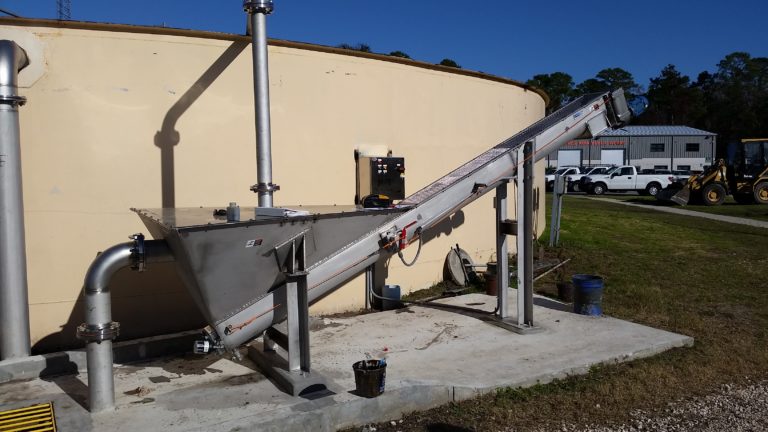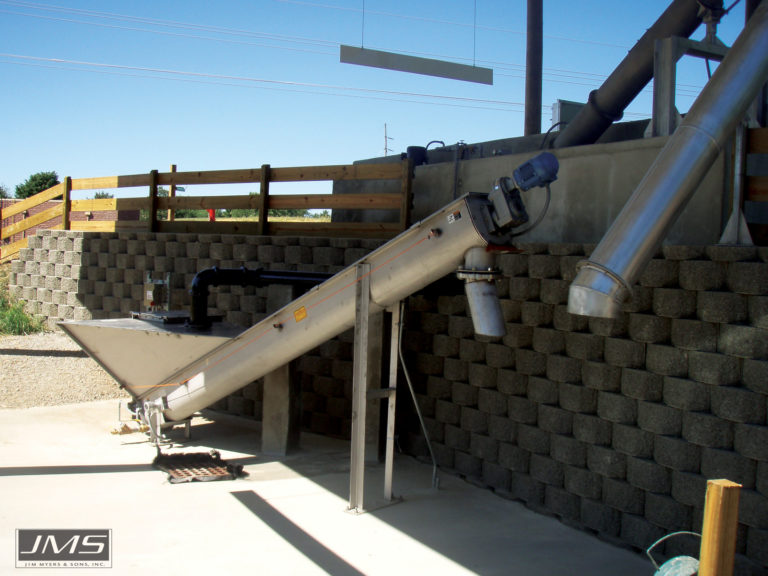Grit Classifiers, also known as a grit screws or grit separators, are used at wastewater treatment plants at the headworks (front end of the plant) to help separate the grit from organics and water. Grit removal needs to be performed at the headworks of plants to help reduce wear to downstream pumps and mechanical equipment, to help prevent pipe blockage, and to prevent from reducing the effective volume of the treatment basins downstream. Conventional grit classifiers typically consist of a hopper positioned on top of an inclined screw conveyor rotating at a slow RPM. Typically grit classifiers are made of stainless steel housing and employ a shafted screw conveyor, but also can employ a shaftless screw conveyor.
What goes into choosing between a shafted or a shaftless grit classifier? To begin, the upfront capital cost between the two different styles is comparable. Additional considerations include maintenance costs and down time for performing maintenance.
Selecting a Shafted Grit Classifier

Shafted grit classifiers are the most common style of grit classifier used today. Shafted grit classifiers have the ‘pros’ that come with shafted screw conveyors, while, importantly, they do not have to employ one the ‘cons’ of a shafted screw conveyor system – they are short enough in length to not require an intermediate hanger bearing (typically). Grit classification is a very abrasive application.
That said shafted grit classifiers are most often selected over shaftless grit classifiers in as much as shaftless conveyors must have a sacrificial wear component – whether that be the auger itself, or the wear liner employed – with the material cost and associated labor to replace. Typically in shafted systems a layer of grit forms between the OD of the spiral and the ID of the screw conveyor trough, where only minimal movement of grit occurs. For larger plants, or plants where the grit classifier has long hours of operation offering increased runtime and abrasive activity, a shafted system has an advantage over a shaftless.
JMS, Wemco, Vulcan, Lakeside, Envirodyne Systems, and others supply shafted grit classifiers.
Pros to Shafted Grit Classifier
- Increasing shaft size of screw, when necessary, cuts out the need for a hanger bearing
- No need for a liner
- Better vs shaftless for larger diameter grit classifier systems
- No internal sacrificial wear components
- The lower end bearing is the only maintenance item to ‘keep an eye on’
Cons to Shafted Grit Classifier
- Employs a lower end bearing, which can be located inside the hopper (internal) or outside the hopper (external):
- Internal end bearings are not readily visible for inspection without draining the hopper or elevating the screw
- Greasing of the lower end bearing is required (typically)
Selecting a Shaftless Grit Classifier

Shaftless grit classifiers are not as common as shafted systems at municipal treatment plants. The most fundamental reason is the abrasive nature of the grit application. Shaftless grit classifiers employ a shaftless screw conveyor, which, by design, utilize a sacrificial wear component. On the flip side, a shaftless screw system has no lower end bearing assembly to maintain or replace.
When shaftless conveyors are selected, typically the liner material used is not a sacrificial UHMW-PE liner, as is most common for shaftless screw conveyor systems utilized for sludge or screenings at treatment plants. UHMW wears too quickly due to the abrasiveness. Instead, a plate liner with 360-400 Brinell hardox bars skip welded to it, is inserted into the screw conveyor trough. One of the two – either the screw auger itself (i.e. the flights) or the liner system employed – is the sacrificial component. Keep in mind the screw conveyor is rotating at a quite slow RPM, and if the hours of operation are ‘less vs more’, then the components should last for quite some time. Wear components for smaller diameter systems operating at smaller plants during reduced hours of operation will last longer than larger diameter systems offering increased weight and wear and operating for longer hours.
Spirac, Hydro International, and others supply shaftless grit classifier.
Pros to Shaftless Grit Classifier
- Requires no lower end bearing assembly
- Slow speed of classifier operation helps extend the life of wear items
- Lower hours of operation helps extend the life of wear items
Cons to Shaftless Grit Classifier
- There is a sacrificial component that is costly to replace (vs lower end bearing components in a shafted system)
- If timely/periodic maintenance inspections are not performed well, and wear components not replaced in time, the first sign of a problem is when the auger wears/tears through the bottom of the trough
- Preventative maintenance inspections require close inspection and attention in order to offer visibility of the wear components. Draining of the hopper and possibly lifting of the screw conveyor is required, both of which are too often not done
- Larger shaftless screws are heavier and offer increased wear and shortened life to the liner or flights
- Replacement items can be costly and lead to longer down time
Jim Brettman has been with JMS for 9 years and serves on the sales side of the business as a Sr. Application Engineer focusing on the JMS Delta-SEPARATION. He has a BS in Civil Engineering from the University of Tennessee and worked in various positions with Exxon Co. for 12 years. After locating to Charlotte, Jim ran his own business for seven years as a rep for industrial wastewater treatment equipment and systems. Jim is proud to have worked closely with Dave Myers in closing the largest single sale by JMS to date, the Boston Deer Island Delta-SKIMMER (scum pipe) project. Jim says, “I thoroughly enjoy working with a Company that embodies integrity, quality, and service as its mantra, and working with our Reps to increase the sales of JMS products.”

